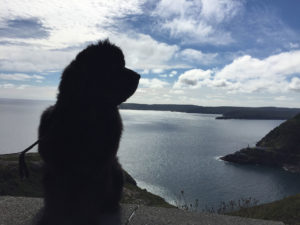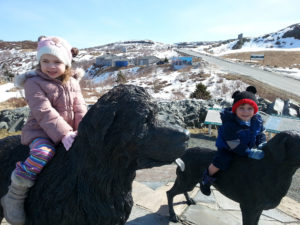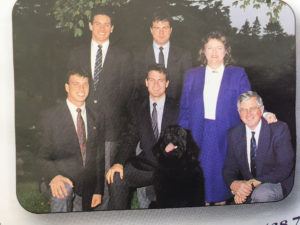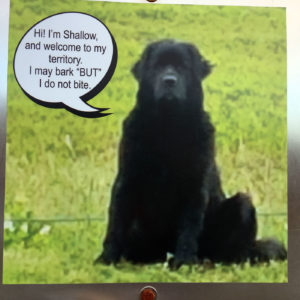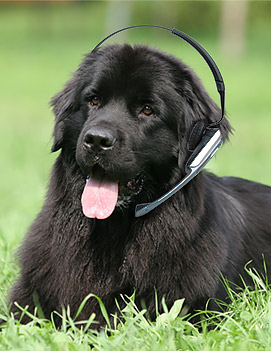Most all our guests, and I suspect nearly every person on the planet, is fascinated by the Newfoundland Dog. He is an especially noble creature whose sheer size creates an enormous presence, but his thick black mane, spotted tongue, rescue credits, and wonderful disposition, make him an easily recognizable fan favorite the world over.
Unfortunately, guests are most disappointed when they find so few (if any) Newfoundland dogs during their visit to this province. They’ll see dozens of photos of Newfoundland dogs, a few statues, hear lots of stories, and if they spend enough time on Signal Hill, Mr. Jackman will eventually show up for his daily walk with ‘Cabot’. But the fact remains, there just aren’t very many Newfoundland dogs left in this province.
What? Really? How is that possible. Isn’t the Newfoundland dog an indigenous breed to the island?
Yes, supposedly. There are many who believe that the Newfoundland dog evolved from relations between the Black Wolf Dog introduced by the Norse people and a brown ‘Bear Dog’ which the Skraeling’s (Norse label for indigenous people) domesticated.
Newfoundland dogs were primarily kept and bred as beasts of burden. They were used to haul wood, sleighs, caplin, and fish; chores which are now managed with tractors, quads, and snowmobiles. Newfoundlanders are far too pragmatic to entertain the upkeep of such an animal with little return on cost / investment. So just as other draft animals like horses and oxen were replaced, so too has the Newfoundland Dog all but disappeared from these shores.
Which is unfortunate since they are such lovely creatures who, when placed in the right environment, exhibit many desirable characteristics that extend well beyond their sheer strength and size. Some of which you must witness in order to properly appreciate.
Or not.
Our first Newf was a magnificent creature named Jigger. Jigger was the most beautiful Newfoundland dog imaginable. But there’s no way he could have survived a single moment without our family and neighbours feeding him. He didn’t swim, wouldn’t bark, hardly ever moved from my mother’ foot step, ate a pile of grub and racked up thousands in vet and grooming bills. He wouldn’t have lasted a month in our house if not for the role he assumed in our family’s tour company, greeting guests at the hotel and standing patiently for hundreds of photos when hired out to convention groups.
In fairness, we didn’t get Jigger until he was almost a year old and despite the breeders invasive questioning regarding our home environment, the dog had never seen the outside of the breeder’s pound until he came home with us. The poor bugger was grossly neglected and had no opportunity to develop his depth perception, let alone the innate skill set he’d require to survive in Newfoundland on his own.
Nothing like our second Newf, ‘Gina’, who was purchased as a mascot for a resort property we operated on the west coast of the island. Though ‘Jigger’ had an abundance of freedom at my parent’s small farm in Topsail, he arrived too late for his natural instincts to develop. Gina on the other hand, was introduced to the wilds as a young puppy and she quickly adapted to what was obviously her native land.
It was amazing watching her forage for food like a bear; eating berries, and buds, insects and grubs. She devoured voles and was an adept hunter who could stalk and snatch song birds from the woods. She rarely touched her food dish and spent most of her time orbiting around the periphery of the property like a distant planet Pluto.
And maybe that’s what we should have called her.
Everyone said ‘Gina’ sounded Goofy, and you know what kind of rhymes this made for our lovely Newfy.

